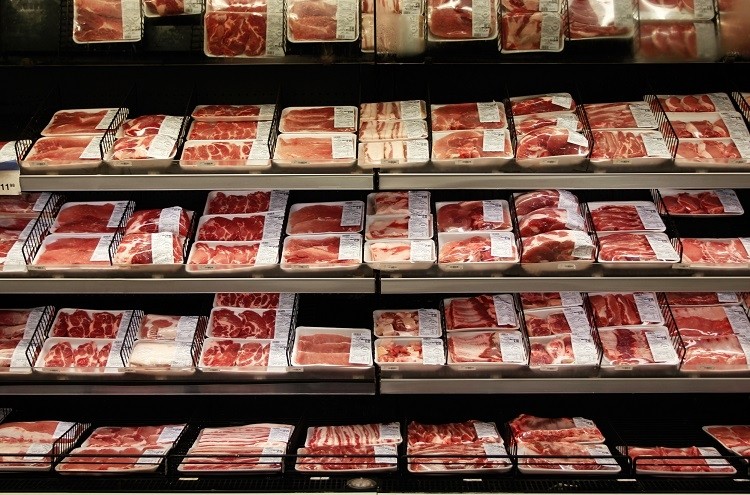Why Bagley Farms Meat Market Edwardsville IL Is the very best Choice for Top Quality Meats
Why Bagley Farms Meat Market Edwardsville IL Is the very best Choice for Top Quality Meats
Blog Article
Discover the Art of the Butcher's Cut in a Modern Meat Market
In the ever-evolving landscape of modern-day meat markets, the butcher's cut has transcended its traditional origins, merging old-time craftsmanship with modern practices. What absolutely sets the modern butcher apart is their capability to forge a much deeper connection in between customers and the origins of their meat.
Advancement of Butchery Methods
The advancement of butchery methods mirrors a rich tapestry of technology and adaptation driven by innovations in innovation, adjustments in consumer need, and a much deeper understanding of meat science. Historically, butchery was a craft gave through generations, with techniques sharpened over centuries to make best use of yield and taste. The commercial change ushered in mechanization, transforming typical practices and allowing massive handling.
The mid-20th century saw butchery techniques even more fine-tuned by clinical understandings into muscle biology and meat aging, improving both inflammation and preference. Innovations like vacuum packaging and refrigeration prolonged item shelf-life, permitting butchers to expand offerings and improve quality control. This duration additionally marked the rise of specific equipment, such as band saws and meat slicers, which enhanced accuracy and efficiency in meat processing.

The 21st century has presented electronic modern technology into the butchery world. Electronic systems currently assist in monitoring pet provenance and maximizing cuts to fulfill certain consumer choices. Furthermore, a revival in artisanal butchery has emerged, mixing typical abilities with contemporary knowledge to deal with consumers looking for honest and sustainable meat options. This advancement emphasizes a dynamic interplay in between custom and development, meeting modern needs while protecting the craft's heritage.
Understanding Meat Cuts
Recognizing the ins and outs of meat cuts is vital for both butchers and consumers looking for quality and worth. Each cut comes from a various part of the animal, imparting special flavors, structures, and cooking techniques - bagley farms meat market edwardsville il. Mastery of these differences not just enhances cooking experiences but additionally optimizes the utility of each carcass. For butchers, exact cuts reflect skill and regard for the craft, guaranteeing marginal waste and optimal yield.

Comprehending muscle mass composition is critical; muscular tissues utilized more regularly by the pet tend to be harder and are best fit for slow food preparation techniques, while less-used muscles, like those located in the loin, are much more tender and ideal for cooking or roasting. Familiarity with these differences equips customers to make educated choices, boosting their culinary ventures.
Selecting Top Quality Meat
Selecting the ideal meat involves more than just choosing an aesthetically appealing piece from the screen. The art of picking quality meat requires a discerning eye and understanding of details attributes that represent quality and quality.
Second of all, consider the marbling, which refers to the white flecks of fat within the muscle mass. Appropriate marbling is a vital indication of inflammation and taste, as it melts during cooking, enhancing the meat's navigate to these guys juiciness. Keep in mind, higher marbling typically associates with premium top quality cuts, such as USDA Prime.
Appearance is an additional critical element; meat ought to feel solid to the touch, not slimy or overly soft. Additionally, be mindful of the fragrance. Fresh meat ought to have a clean, neutral smell, devoid of any sour or off-putting odors.
Pairing Cuts With Food Preparation Approaches

Alternatively, harder cuts like brisket and chuck roast are abundant in collagen, which damages down right into jelly when prepared gradually. These cuts are ideal for braising or slow roasting, allowing the meat to tenderize in time and develop deep, intricate tastes. Cuts such as brief ribs and pork shoulder make out well with slow-cooking approaches, where expanded cooking times transform their robust textures into succulent dishes.
Lamb shanks and oxtail, which need extended cooking to tenderize, are perfect candidates for cooking or slow simmering. These techniques coax out abundant, passionate flavors while preserving moisture. By comprehending the unique qualities of each cut, cooks and home cooks alike can elevate their cooking creations, making certain each meal is both satisfying and memorable.
The Butcher's Function Today
Navigating the advancing landscape of the contemporary meat market, the butcher's function today expands past plain her explanation prep work of cuts. Contemporary butchers are culinary artisans, teachers, and supporters for lasting methods. They bridge the space in between the farm and the fork by making certain honest sourcing, understanding animal husbandry, and prioritizing transparency in the supply chain. This shift reflects the growing consumer need for quality over quantity, where provenance and animal well-being are paramount.
In addition to crafting exact cuts, butchers currently engage straight with customers, offering view website cooking advice and customizing options to suit specific requirements and preferences. Their expertise in meat aging, marbling, and flavor profiles empowers customers to make informed decisions, improving their culinary experiences. This personalized service exemplifies the butcher's evolving duty as a trusted consultant in the cooking area.
Furthermore, butchers are critical in reducing waste, making use of whole animals to produce varied items such as sausages and supplies. This thorough approach not only values the pet however additionally lines up with contemporary sustainability objectives. In this method, the contemporary butcher symbolizes both custom and advancement, adjusting to an ever-changing market while protecting the virtuosity and honesty of their craft.
Final Thought
Mastery in recognizing varied meat cuts and top quality indicators empowers butchers to offer informed suggestions, aligning specific cuts with ideal food preparation techniques. By recognizing historic techniques while accepting modern demands, the butcher's role stays crucial in today's innovative meat market.
Report this page